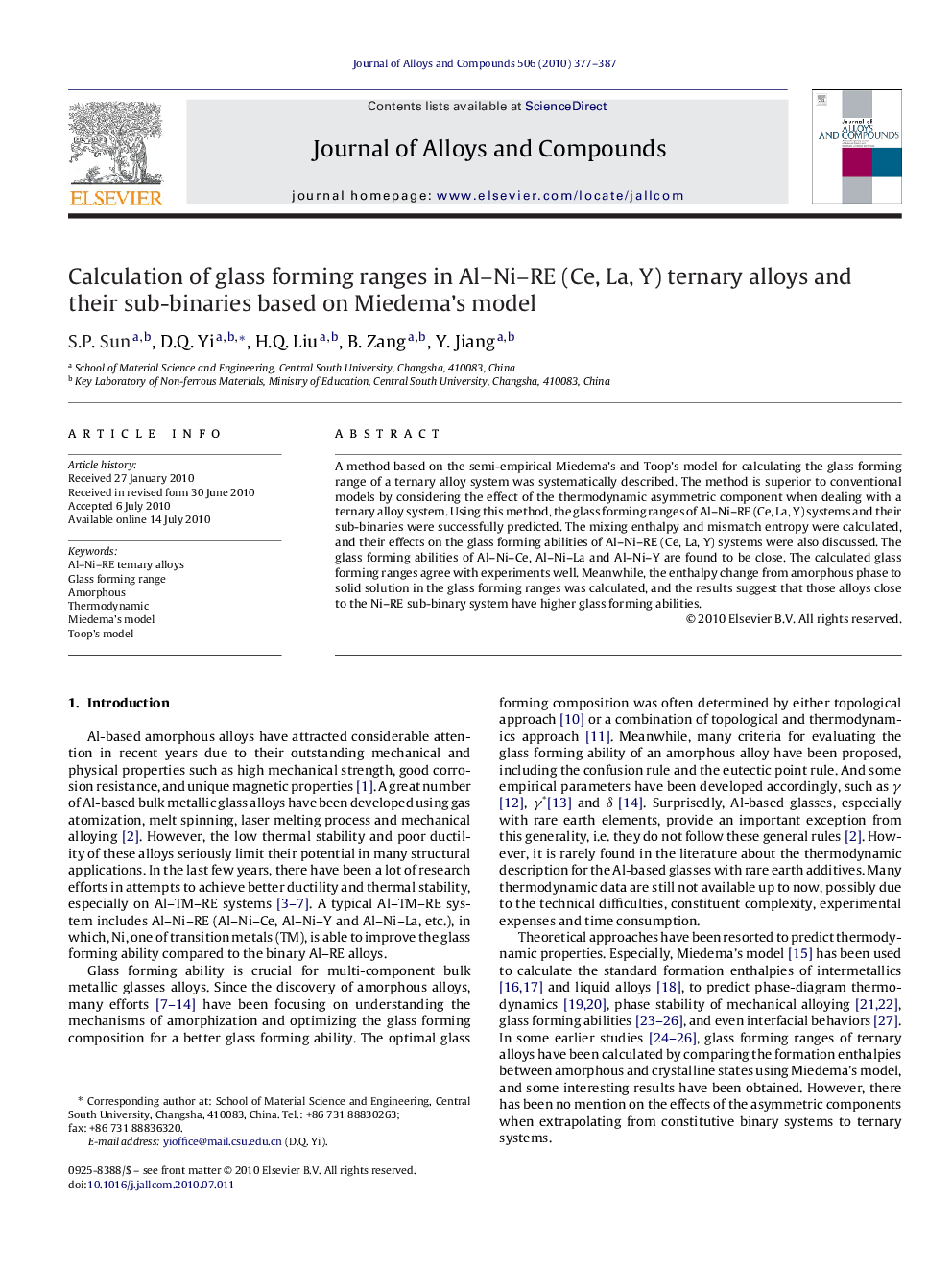| Article ID | Journal | Published Year | Pages | File Type |
|---|---|---|---|---|
| 1618565 | Journal of Alloys and Compounds | 2010 | 11 Pages |
A method based on the semi-empirical Miedema's and Toop's model for calculating the glass forming range of a ternary alloy system was systematically described. The method is superior to conventional models by considering the effect of the thermodynamic asymmetric component when dealing with a ternary alloy system. Using this method, the glass forming ranges of Al–Ni–RE (Ce, La, Y) systems and their sub-binaries were successfully predicted. The mixing enthalpy and mismatch entropy were calculated, and their effects on the glass forming abilities of Al–Ni–RE (Ce, La, Y) systems were also discussed. The glass forming abilities of Al–Ni–Ce, Al–Ni–La and Al–Ni–Y are found to be close. The calculated glass forming ranges agree with experiments well. Meanwhile, the enthalpy change from amorphous phase to solid solution in the glass forming ranges was calculated, and the results suggest that those alloys close to the Ni–RE sub-binary system have higher glass forming abilities.
Research highlights▶ A method based on semi-empirical Miedema's and Toop's model for predicting glass forming range of ternary alloy system has been systematically described. ▶ The method is superior to conventional models by considering the effect of the thermodynamic asymmetric component when dealing with a ternary alloy system. ▶ The glass forming ranges of Al–Ni–RE (Al–Ni–Ce, Al–Ni–Y and Al–Ni–La) systems and their sub-binaries have been successfully calculated. ▶ The present calculations using the method are in well agreement with experiments. ▶ This model is especially useful for predicting the glass forming range of ternary alloy system because the calculations do not require experimental data.
